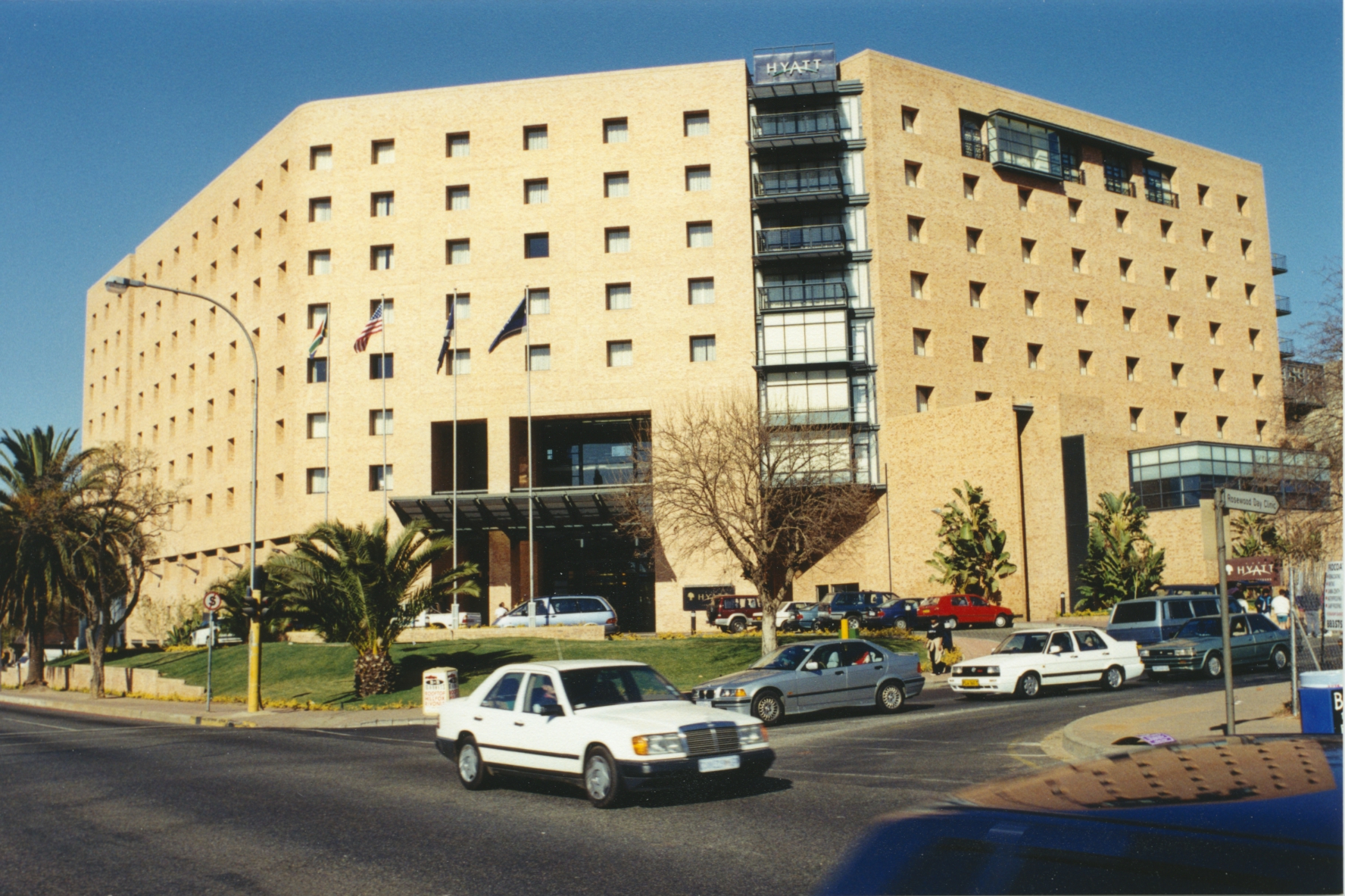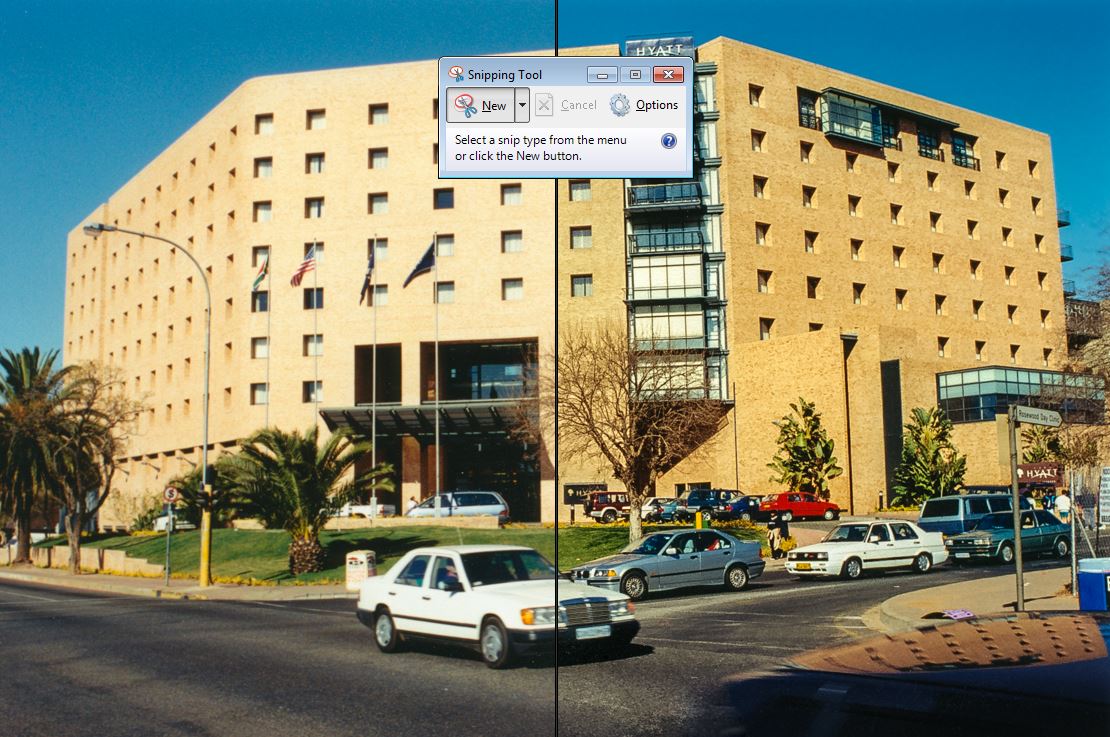I love panoramas and over the years I have used various software applications to create them. Now that I am using Photoshop CS5 I really don't need any other software to create them. However, not everyone uses Photoshop so how does Photoshop Photomerge compare with other applications? I recently tried out Microsoft's ICE (Image Composite Editor) on several pictures, just to see what it could do. Without any work other than cropping, how well does ICE standup against Photoshop CS5? I picked two pictures that I took in South Africa in front of the Breakers Resort at Umhlanga Beach. The reason I picked the two photos is because of the 5 fountains that I could use to help understand what was used from each picture. Note: If you use Photoshop, you can see exactly how the picture was stitched. I did nothing other than to drop them into each application using the automatic features of the applications to see how well each one handled the stitching function. Since the ICE application is a free download it doesn't have to be perfect to have great value. What I discovered was that ICE did a great job with the pictures that I selected, with the benefit that it is free. Let's take a look at the results.


So here are the two pictures that I started out with. My sister-in-law is standing in front of the resort and I took her picture. However I couldn't get the full name on the wall so I took a second picture of just the Breakers Resort name by itself.
I dropped the above two pictures into ICE and the result was almost perfect.

[color-box color=yellow]
Notice the shadow from the roof has a slight shift where the picture was stitched together. [/color-box]
Now let's look at the results using Photoshop CS5 Photomerge.

Note that both applications stitched the photographs together almost exactly the same. The left 2 fountains are from the left picture and the other fountains are from the right picture. There are three barriers that can be seen in the foreground. The middle barrier is from the left picture in both examples. The "Breakers Resort" is from the right picture. Notice the roof line shadow is different thought. In the Microsoft ICE software the shadow from the left picture is lower than the shadow from the right picture. In the Photoshop CS5 version the shadow from the left picture is slightly higher than the shadow from the right picture, and it is in a different location. So Photoshop did a little better in the shadow area of the picture. However, the big difference is in the amount of data Photoshop was able to keep as compared to ICE. To do the stitching in ICE the left picture has more zoom applied to it than the right picture. Photoshop was able to keep more data from both pictures and did a slightly better stitch as well.
But is this a fair comparison? Could ICE do better? I decided to try to use the other stitch options that ICE provided. Using the Automatic feature it used "Planar Motion 3". I decided to try other camera motion options provided, and I found that the automatic feature did indeed select the best setting. This is a very high level compare of the two products and of course Photoshop allows me to do a lot more with the picture once I have created it. Using ICE you may need to go to your photo editing program of choice and get more creative.
The above CS5 examples were created with "Blend Images Together" checked. Let's take a look at the results of a photomerge without checking "Blend Images Together.

The results were cropped based on the usable image created. Notice the shadow of the roof line has been resolved and the objects used from each of the pictures has changed. The stitching no longer takes into account shadows or color matching. Since the two images are almost identical in exposure and color, turning off blending in this case produces good results, but a small amount data from each picture is lost compared to the CS5 blended version, but still more data than the ICE version.
Just for fun I selected the Geometric Distortion Correction in CS5 to see what the results would be.

I love panoramas because they really help the viewer better understand the environment where the picture was taken. A picture of sand could be a beach or a sandbox, maybe it is quicksand! Help the viewer understand what they are seeing by providing a perspective. Remember to think panorama the next time you go out to take photographs. Make sure your photos overlap by as much as 40%. Too much or too little overlap will prevent the automated panoramic features from performing the stitch. Remember to that GPS GEO tagging can add an even higher level to the viewers perspective!
















